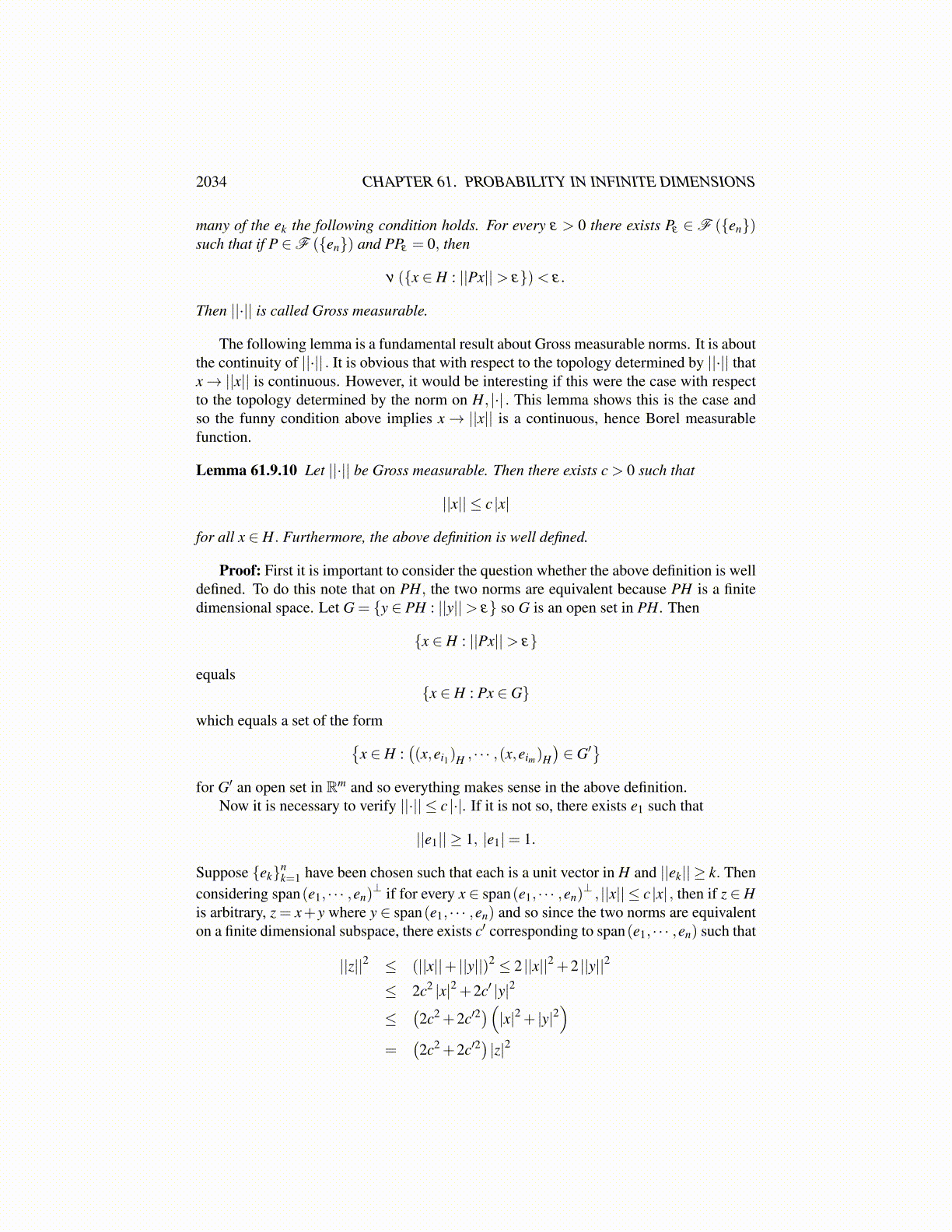
2034 CHAPTER 61. PROBABILITY IN INFINITE DIMENSIONS
where from the definition,
(θ ∗eθ es, t) = ∑i
ti
(∑
js je j,ei
)= ∑
itisi = (s, t)
and so θ∗eθ e is the identity on Rn and similar reasoning yields θ eθ
∗e is the identity on
θ e (Rn). Then using the change of variables formula and the fact |det(L)|= 1,
1
(2π)n/2 (det(θ ∗eQθ e))1/2
∫F
e−12 t∗θ∗eQ−1θ etdt
=1
(2π)n/2 (det(θ ∗eQθ e))1/2
∫G
e−12 s∗L∗θ∗eQ−1θ eLsds
=1
(2π)n/2 (det(θ∗f Qθ f
))1/2
∫G
e−12 s∗θ∗f θ eθ
∗eQ−1θ eθ
∗eθ f sds
=1
(2π)n/2 (det(θ∗f Qθ f
))1/2
∫G
e−12 s∗θ∗f Q−1θ f sds
where part of the justification is as follows.
det(θ∗f Qθ f
)= det
(θ∗f θ eθ
∗eQθ eθ
∗eθ f)
= det(θ∗f θ e)
det(θ ∗eQθ e)det(θ∗eθ f)
= det(θ ∗eQθ e)
becausedet(θ∗f θ e)
det(θ∗eθ f)= det
(θ∗f θ eθ
∗eθ f)= det
(θ∗f θ f)= 1.
This proves the lemma.It would be natural to try to extend ν to the σ algebra determined by C and obtain a
measure defined on this σ algebra. However, this is always impossible in the case whereQ = I.
Proposition 61.9.7 For Q = I, ν cannot be extended to a measure defined on σ (C ) when-ever H is infinite dimensional.
Proof: Let {en} be a complete orthonormal set of vectors in H. Then first note that His a cylinder set.
H = {x ∈ H : (x,e1) ∈ R}
and soν (H) =
1√2π
∫R
e−12 t2
dt = 1.